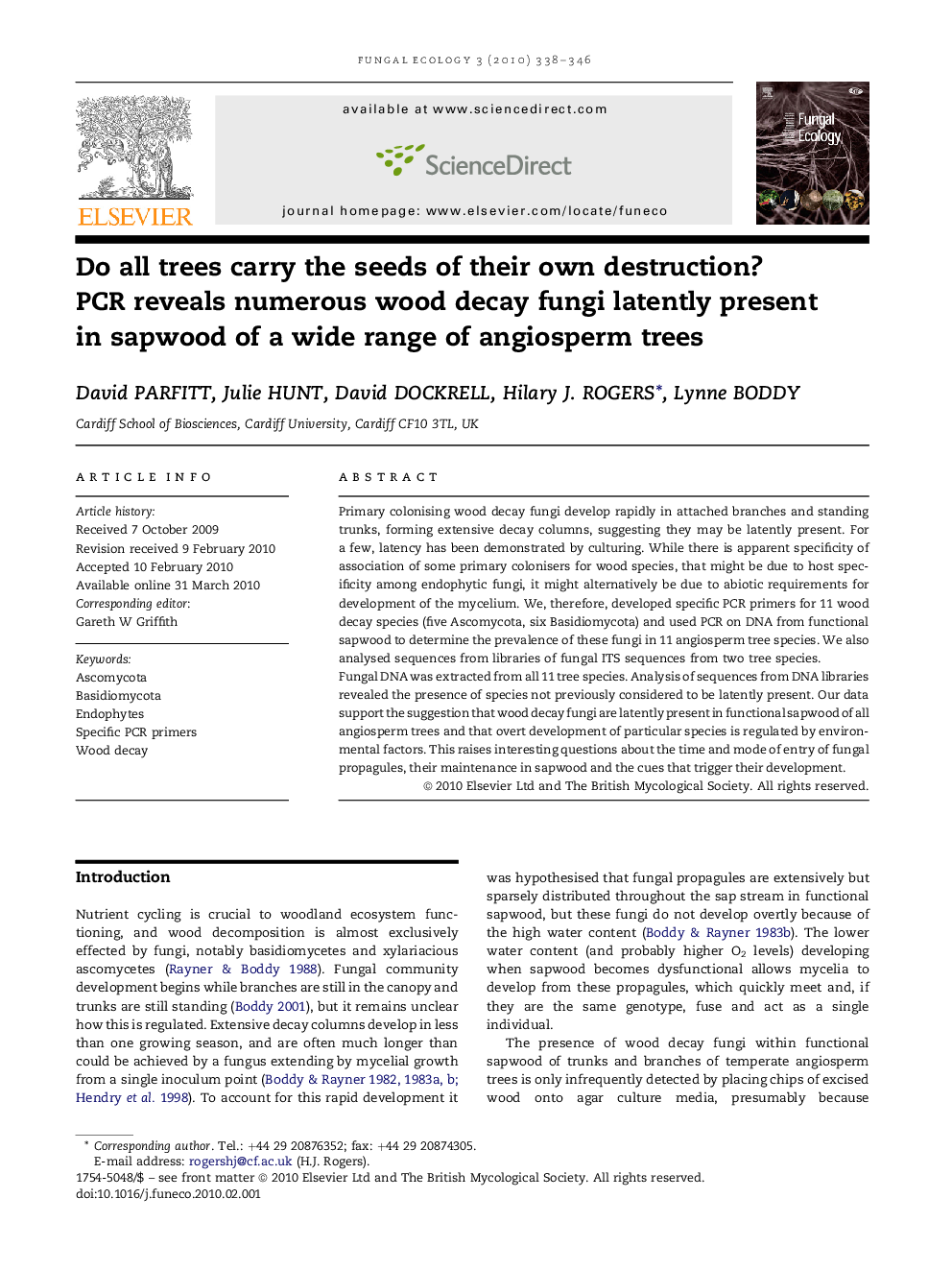| Article ID | Journal | Published Year | Pages | File Type |
|---|---|---|---|---|
| 2054147 | Fungal Ecology | 2010 | 9 Pages |
Primary colonising wood decay fungi develop rapidly in attached branches and standing trunks, forming extensive decay columns, suggesting they may be latently present. For a few, latency has been demonstrated by culturing. While there is apparent specificity of association of some primary colonisers for wood species, that might be due to host specificity among endophytic fungi, it might alternatively be due to abiotic requirements for development of the mycelium. We, therefore, developed specific PCR primers for 11 wood decay species (five Ascomycota, six Basidiomycota) and used PCR on DNA from functional sapwood to determine the prevalence of these fungi in 11 angiosperm tree species. We also analysed sequences from libraries of fungal ITS sequences from two tree species.Fungal DNA was extracted from all 11 tree species. Analysis of sequences from DNA libraries revealed the presence of species not previously considered to be latently present. Our data support the suggestion that wood decay fungi are latently present in functional sapwood of all angiosperm trees and that overt development of particular species is regulated by environmental factors. This raises interesting questions about the time and mode of entry of fungal propagules, their maintenance in sapwood and the cues that trigger their development.
